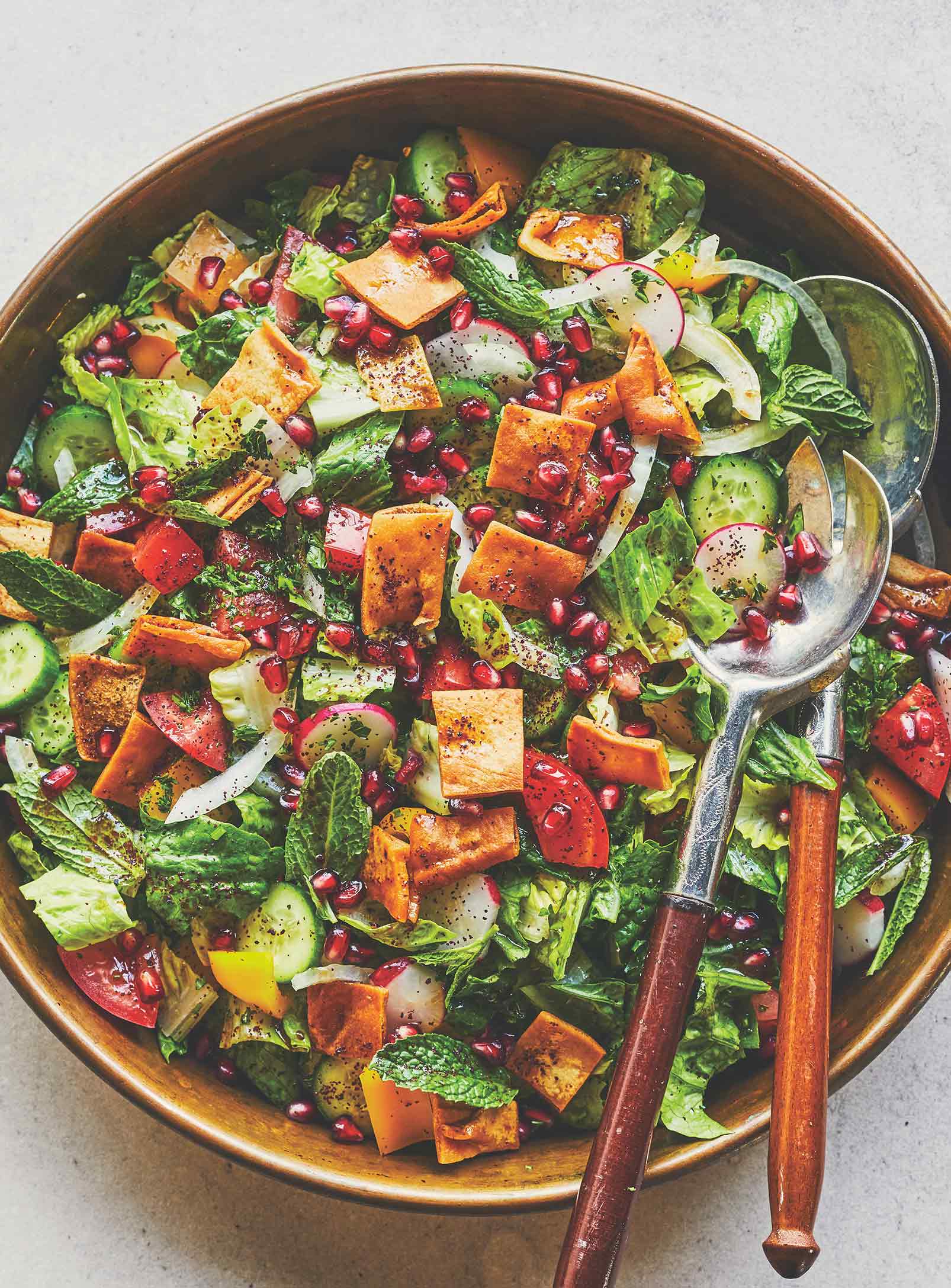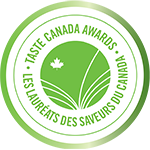

The word fattoush comes from the Arabic word fatafit, which refers to leftover stale pita bread that is given a delicious second life by frying. Whatever the origin of its name, one thing is certain: this unbelievably fresh, slightly tangy salad is a hit with adults and children alike.
- Step 1: Prepare the vinaigrette. In a small bowl, mix all ingredients with a fork. Set aside.
- Step 2: Prepare the fried pitas. Heat vegetable oil in a skillet over medium-high heat. When hot, add the pita pieces and fry until crisp. Set aside.
- Step 3: Place all the fattoush ingredients and the fried pita pieces in a salad bowl. Pour in the vinaigrette and toss with your hands. Garnish with pomegranate seeds.
Yield: serves 4-6
- radishes, minced
- 1 lettuce or 1 romaine lettuce heart, minced
- 1 Lebanese cucumber, minced
- 1 large tomato, sliced
- 1 small onion, cut into strips
- 1 yellow bell pepper, minced
- Parsley leaves, chopped
- Fresh mint leaves, chopped
- Pomegranate seeds
Fried pitas
- Vegetable oil
- 1 fresh pita bread, cut into pieces
Vinaigrette
- 3 tbsp olive oil
- 1 tbsp lemon juice
- 1 tbsp vinegar
- 1 tsp Granada molasses
- ¼ tbsp salt
- ¼ tbsp sumac

Adelle Tarzibachi immigrated to Montreal nearly 20 years ago, and since then the Syrian-born woman has become an experienced businesswoman committed to her community.
Driven by the desire to forge a lasting relationship between Canada and her native country, the entrepreneur first created ADECO IMPORT. The company specializes in the import of Syrian handicrafts made by artisans from the cities of Damascus and Aleppo. In 2017, she co-founded Les Filles Fattoush, a Syrian cuisine that won a 2022 Taste Canada Gold Award in the Culinary Narratives category, in response to the wave of Syrian migrants in Canada. The idea was to provide Syrian women with an opportunity to integrate into the workforce by drawing on their culinary skills. Adelle’s determination to make a difference in the lives of the people of her country is boundless.
These featured authors and recipes are presented as part of a collaboration between the Museum and Taste Canada. A project meant to celebrate the vibrant culinary scene in Canada and introduce our upcoming exhibition eat make share: a taste of immigration. This national traveling exhibition will invite you to take a deeper dive into food and immigration. Opening in Halifax, Nova Scotia May 2025.
Presented by


